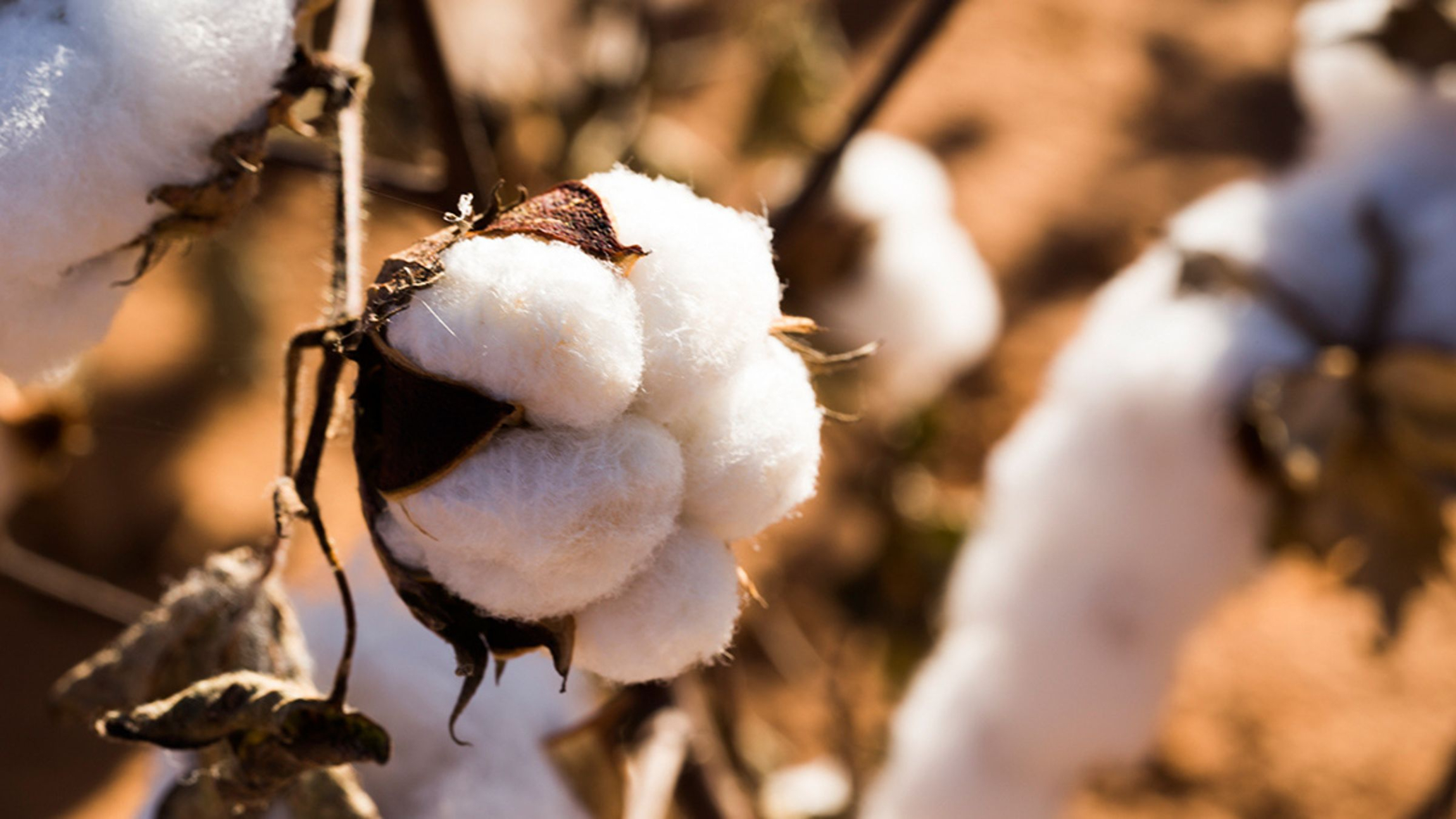
Cotton is a soft, fluffy staple fiber that grows in a boll, or protective case, around the seeds of the cotton plants of the genus Gossypium in the family of Malvaceae. The fiber is almost pure cellulose.
Cotton is known for its versatility, performance and natural comfort. It’s used to make all kinds of clothes and homewares as well as for industrial purposes like tarpaulins, tents, hotel sheets and army uniforms.
Successful cultivation of cotton requires a long frost-free period, plenty of sunshine, and a moderate rainfall, usually from 60 to 120 cm (24 to 47 in). Soils usually need to be fairly heavy, although the level of nutrients does not need to be exceptional. In general, these conditions are met within the seasonally dry tropics and subtropics in the Northern and Southern hemispheres, but a large proportion of the cotton grown today is cultivated in areas with less rainfall that obtain the water from irrigation. Production of the crop for a given year usually starts soon after harvesting the preceding autumn. Cotton is naturally a perennial but is grown as an annual to help control pests. Planting time in spring in the Northern hemisphere varies from the beginning of February to the beginning of June.
In India, the states of Maharashtra (26.63%), Gujarat (17.96%) and Andhra Pradesh (13.75%) and also Madhya Pradesh are the leading cotton producing states, these states have a predominantly tropical wet and dry climate. We export cotton from India into various countries world wide.



